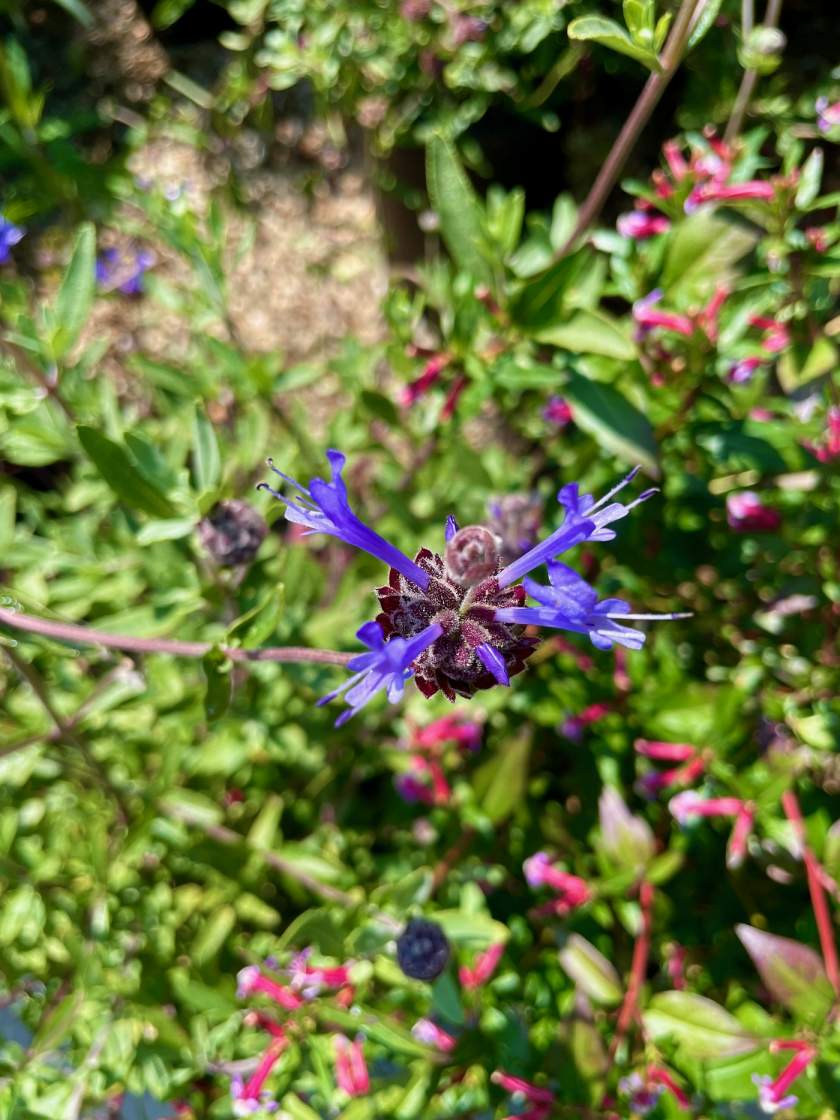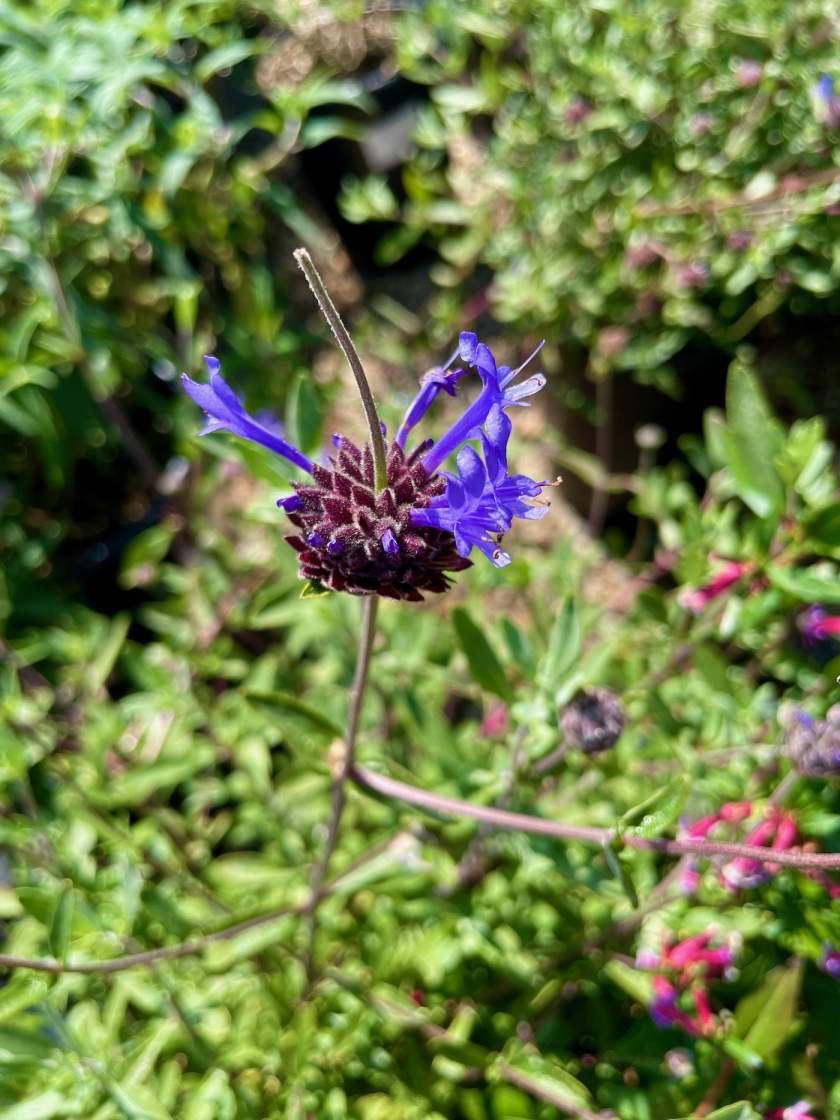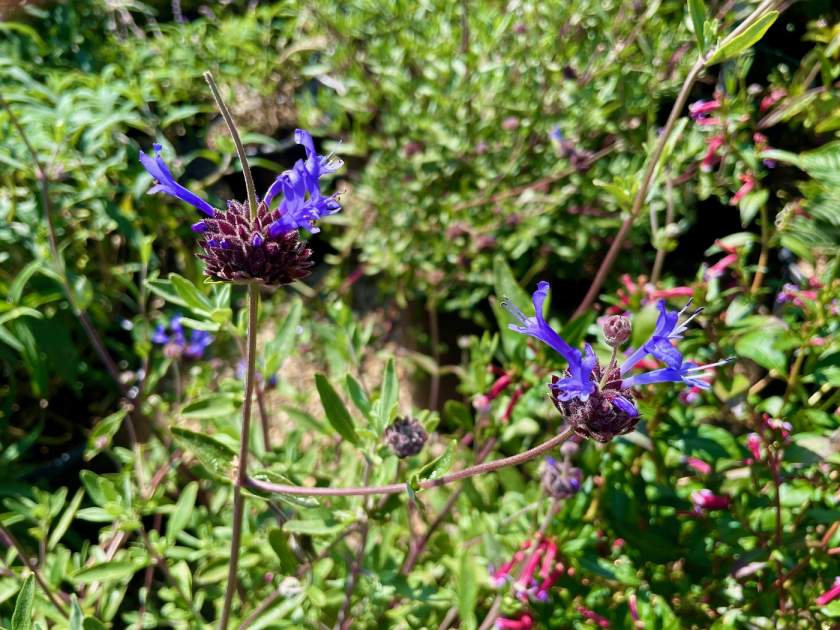Discover the Beauty of Salvia clevelandii ‘Winnifred Gilman’: A Fragrant Delight for Your Garden
Salvia clevelandii ‘Winnifred Gilman’, also known as California Blue Sage, is a remarkable selection of Salvia clevelandii. This native chaparral plant belongs to the Lamiaceae family, commonly known as the Mint family. With its aromatic gray-green foliage and striking clusters of electric blue-purple flowers, Salvia clevelandii ‘Winnifred Gilman’ adds beauty and fragrance to any garden. Let’s explore the characteristics of this captivating sage and learn how to cultivate it successfully.
Characteristics:
Salvia clevelandii ‘Winnifred Gilman’ is a medium-sized mounding shrub, reaching a height and width of 3 to 5 feet. Its pale-green leaves, 1-2 inches long, have a heavily wrinkled surface, adding texture to its foliage. The plant puts on a showy floral display with abundant whorls of colorful pure blue flowers in mid to late spring. Both the leaves and the flowers are highly fragrant, delighting the senses with their pleasing aroma.
Cultivation of Salvia clevelandii ‘Winnifred Gilman’:
Sunlight: Salvia clevelandii ‘Winnifred Gilman’ thrives in full sun. It requires at least 6 hours of direct sunlight each day to promote optimal growth and flowering.
Watering: This native sage is highly adaptable to drought conditions and requires little to no supplemental irrigation once established. However, occasional deep watering during prolonged dry spells can help maintain its attractiveness. Ensure that the soil has excellent drainage to prevent waterlogging.
Soil: Plant Salvia clevelandii ‘Winnifred Gilman’ in well-drained soil. It prefers a soil pH ranging from slightly acidic to neutral. If necessary, amend the soil with organic matter to improve drainage.
Pest and Disease Control: Salvia clevelandii ‘Winnifred Gilman’ is generally resistant to pests and diseases. However, occasional monitoring for common issues such as aphids or powdery mildew is recommended. Promptly address any infestations or diseases using organic pest control methods or suitable treatments.
Propagation:
Salvia clevelandii ‘Winnifred Gilman’ can be propagated through cuttings or seeds.
Cuttings: Take 4- to 6-inch cuttings from healthy stems in early spring or late summer. Remove the lower leaves and dip the cut end in the rooting hormone. Plant the cuttings in a well-draining potting mix and keep them moist in a warm, bright location. Rooting should occur within 4-6 weeks.
Seeds: Sow Salvia clevelandii ‘Winnifred Gilman’ seeds in late winter or early spring. Prepare a well-draining seed-starting mix and cover the seeds lightly. Keep the soil consistently moist and provide warmth and bright light. Germination typically takes 2-4 weeks.
With its attractive foliage, fragrant flowers, and adaptability to drought conditions, Salvia clevelandii ‘Winnifred Gilman’ is an excellent choice for borders, banks, and sunny garden spots. This California native sage attracts bees, butterflies, and hummingbirds, adding life and vitality to your outdoor space. Embrace the aromatic charms and captivating beauty of this delightful sage in your garden and enjoy the serene presence it brings.






